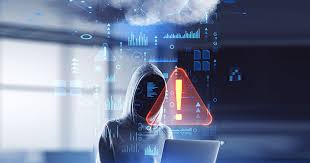What Is Digital Forensics?
Digital Forensic is the practice of identifying, acquiring, and analyzing electronic evidence. Today almost all criminal activity has a digital forensics element, and digital forensics experts provide critical assistance to police investigations. Digital forensic data is commonly used in court proceedings.
An important part of digital forensics is the analysis of suspected cyberattacks, with the objective of identifying, mitigating, and eradicating cyber threats. This makes digital forensics a critical part of the incident response process. Digital forensics is also useful in the aftermath of an attack, to provide information required by auditors, legal teams, or law enforcement.
Electronic evidence can be gathered from a variety of sources, including computers, mobile devices, remote storage devices, internet of things (IoT) devices, and virtually any other computerized system.
This is part of an extensive series of guides about information security.
Why Is Digital Forensics Important?
Digital forensics is commonly thought to be confined to digital and computing environments. But in fact, it has a much larger impact on society. Because computers and computerized devices are now used in every aspect of life, digital evidence has become critical to solving many types of crimes and legal issues, both in the digital and in the physical world.
All connected devices generate massive amounts of data. Many devices log all actions performed by their users, as well as autonomous activities performed by the device, such as network connections and data transfers. This includes cars, mobile phones, routers, personal computers, traffic lights, and many other devices in the private and public spheres.
Digital evidence can be used as evidence in investigation and legal proceedings for:
- Data theft and network breaches—digital forensics is used to understand how a breach happened and who were the attackers.
Online fraud and identity theft—digital forensics is used to understand the impact of a breach on organizations and their customers.
Violent crimes like burglary, assault, and murder—digital forensics is used to capture digital evidence from mobile phones, cars, or other devices in the vicinity of the crime.
White collar crimes—digital forensics is used to collect evidence that can help identify and prosecute crimes like corporate fraud, embezzlement, and extortion.
In the context of an organization, digital forensics can be used to identify and investigate both cybersecurity incidents and physical security incidents. Most commonly, digital evidence is used as part of the incident response process, to detect that a breach occurred, identify the root cause and threat actors, eradicate the threat, and provide evidence for legal teams and law enforcement authorities.
To enable digital forensics, organizations must centrally manage logs and other digital evidence, ensure they retain it for a long enough period, and protect it from tampering, malicious access, or accidental loss.
Defining Digital Risks
As organizations use more complex, interconnected supply chains including multiple customers, partners, and software vendors, they expose digital assets to attack. Organizations also leverage complex IT environments including on-premise and mobile endpoints, cloud-based services, and cloud native technologies like containers—creating many new attack surfaces.
Digital risks can be broken down into the following categories:
- Cybersecurity risk—an attack that aims to access sensitive information or systems and use them for malicious purposes, such as extortion or sabotage.
- Compliance risk—a risk posed to an organization by the use of a technology in a regulated environment. For example, technologies can violate data privacy requirements, or might not have security controls required by a security standard.
Third party risks—these are risks associated with outsourcing to third-party vendors or service providers. For example, vulnerabilities involving intellectual property, data, operational, financial, customer information, or other sensitive information shared with third parties.
Identity risk—attacks aimed at stealing credentials or taking over accounts. These types of risks can face an organization’s own user accounts, or those it manages on behalf of its customers.
Different Branches of Digital Forensics
Computer Forensics
Computer forensic science (computer forensics) investigates computers and digital storage evidence. It involves examining digital data to identify, preserve, recover, analyze and present facts and opinions on inspected information.
This branch of computer forensics uses similar principles and techniques to data recovery, but includes additional practices and guidelines that create a legal audit trail with a clear chain of custody.
Mobile Device Forensics
Mobile device forensics focuses primarily on recovering digital evidence from mobile devices. It involves investigating any device with internal memory and communication functionality, such as mobile phones, PDA devices, tablets, and GPS devices.
Network Forensics
The network forensics field monitors, registers, and analyzes network activities. Network data is highly dynamic, even volatile, and once transmitted, it is gone. It means that network forensics is usually a proactive investigation process.
Forensic Data Analysis
Forensic data analysis (FDA) focuses on examining structured data, found in application systems and databases, in the context of financial crime. FDA aims to detect and analyze patterns of fraudulent activity.
Database Forensics
Database forensics involves investigating access to databases and reporting changes made to the data. You can apply database forensics to various purposes. For example, you can use database forensics to identify database transactions that indicate fraud.
Alternatively, your database forensics analysis may focus on timestamps associated with the update time of a row in your relational database. This investigation aims to inspect and test the database for validity and verify the actions of a certain database user.

